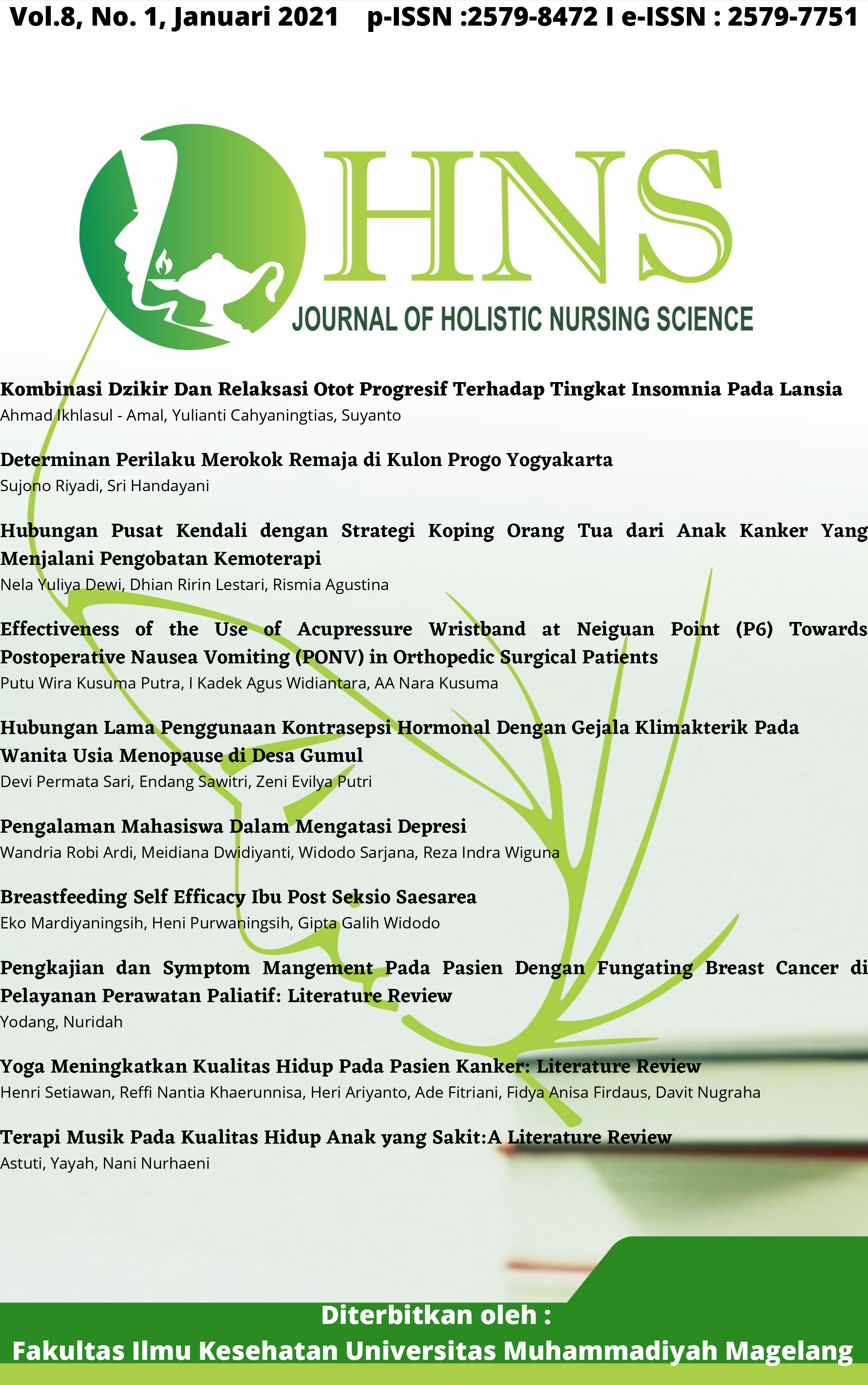Effectiveness of the Use of Acupressure Wristband at Neiguan Point (P6) Towards Postoperative Nausea Vomiting (PONV) in Orthopedic Surgical Patients
Main Article Content
Abstract
Postoperative nausea and vomiting (PONV) is one of the most common causes of patient discomfort after undergoing surgery. The emergence of PONV allows the emergence of various complications including dehydration, electrolyte imbalance, slowing the wound healing process, the emergence of problems related to nutritional fulfillment to pneumonia aspiration. Pharmacological treatment has been done but it has not been effective and there are side effects of drugs used so that we need a complementary therapy that works synergistically with antiemetic therapy, namely acupressure. This study aimed at determine the effectiveness of the use of acupressure wristband at neiguan point (p6) towards postoperative nausea vomiting (ponv) in orthopedic surgical patients at BIMC Hospital Kuta. The study design was a pre-experimental with non-randomized uncontrolled trial with pretest-posttest without control group design, with a total of 19 research subjects included in the inclusion criteria. The research instrument consisted of two questionnaires namely the patient information form and the RINVR questionnaire (Rhodes Index of Nausea Vomiting and Retching). The results showed that the incidence of PONV before being given an intervention was obtained by 12 people (63.2%) had mild nausea and vomiting 7 people (36, 8%) experience moderate nausea and vomiting. Whereas after being given the intervention obtained as many as 6 people (31.6%) did not experience nausea, vomiting, 12 people (63.2%) experienced mild nausea, and 1 (5.3%) experienced moderate nausea and vomiting. Wilcoxon test results showed there is the effect of the use of acupressure wristband at neiguan point (p6) towards postoperative nausea vomiting (PONV) in orthopedic surgical patients at BIMC Hospital Kuta
Downloads
Article Details

This work is licensed under a Creative Commons Attribution 4.0 International License.
Authors who publish their articles in JHNS retain full copyright of their work. JHNS does not require authors to transfer their copyright to the journal or Universitas Muhammadiyah Magelang as the publisher. The authors grant JHNS a license for the first publication.
